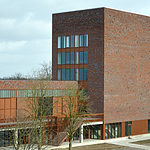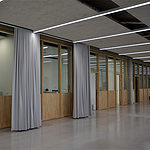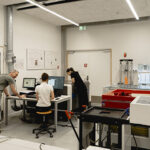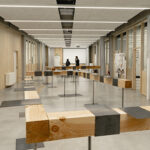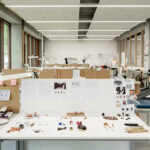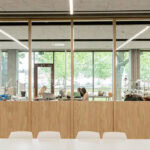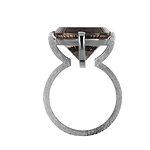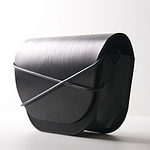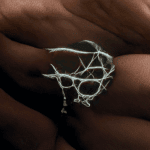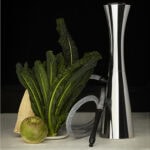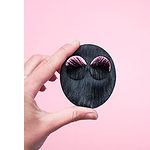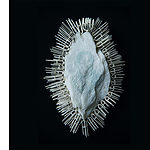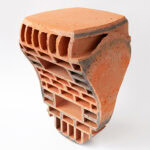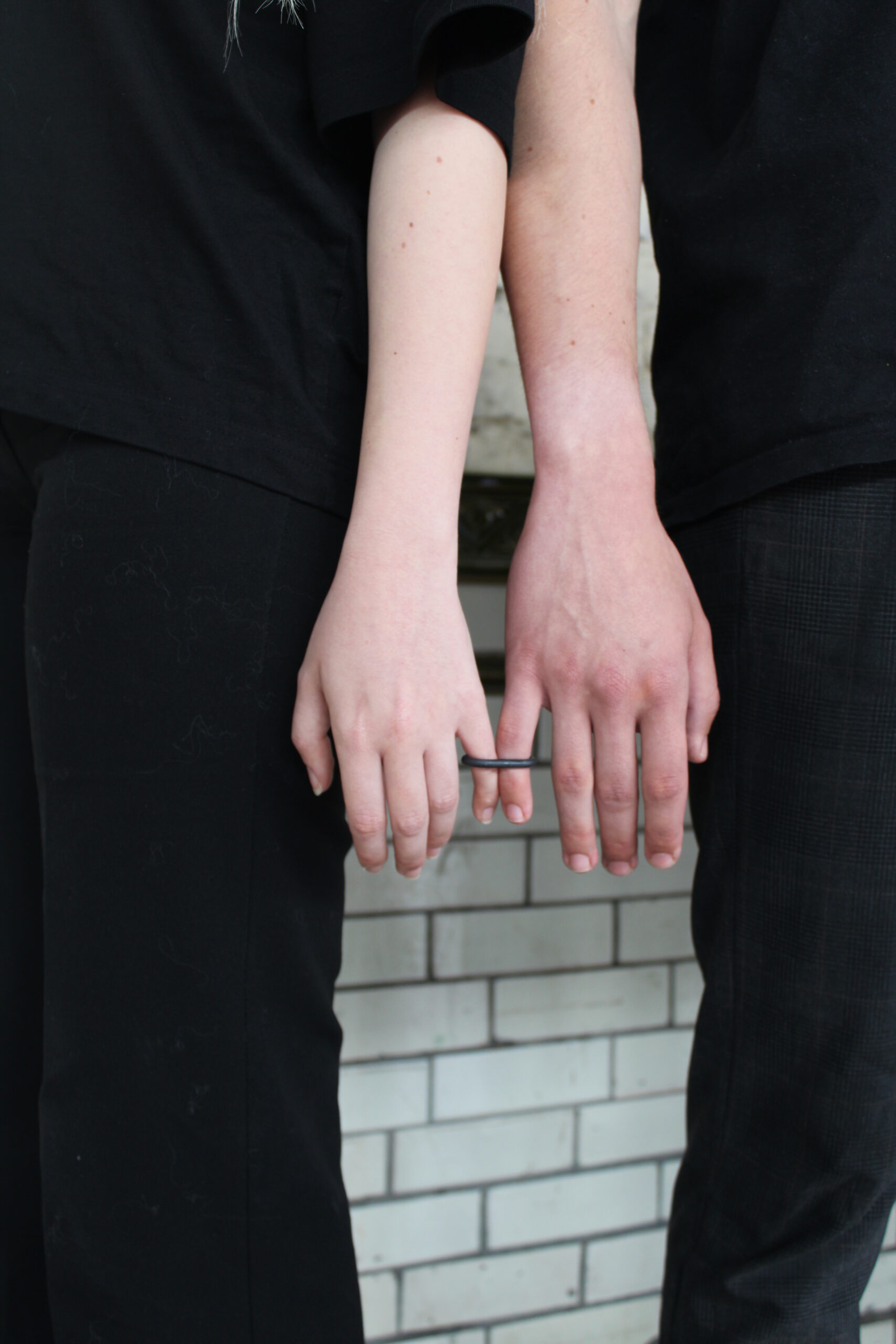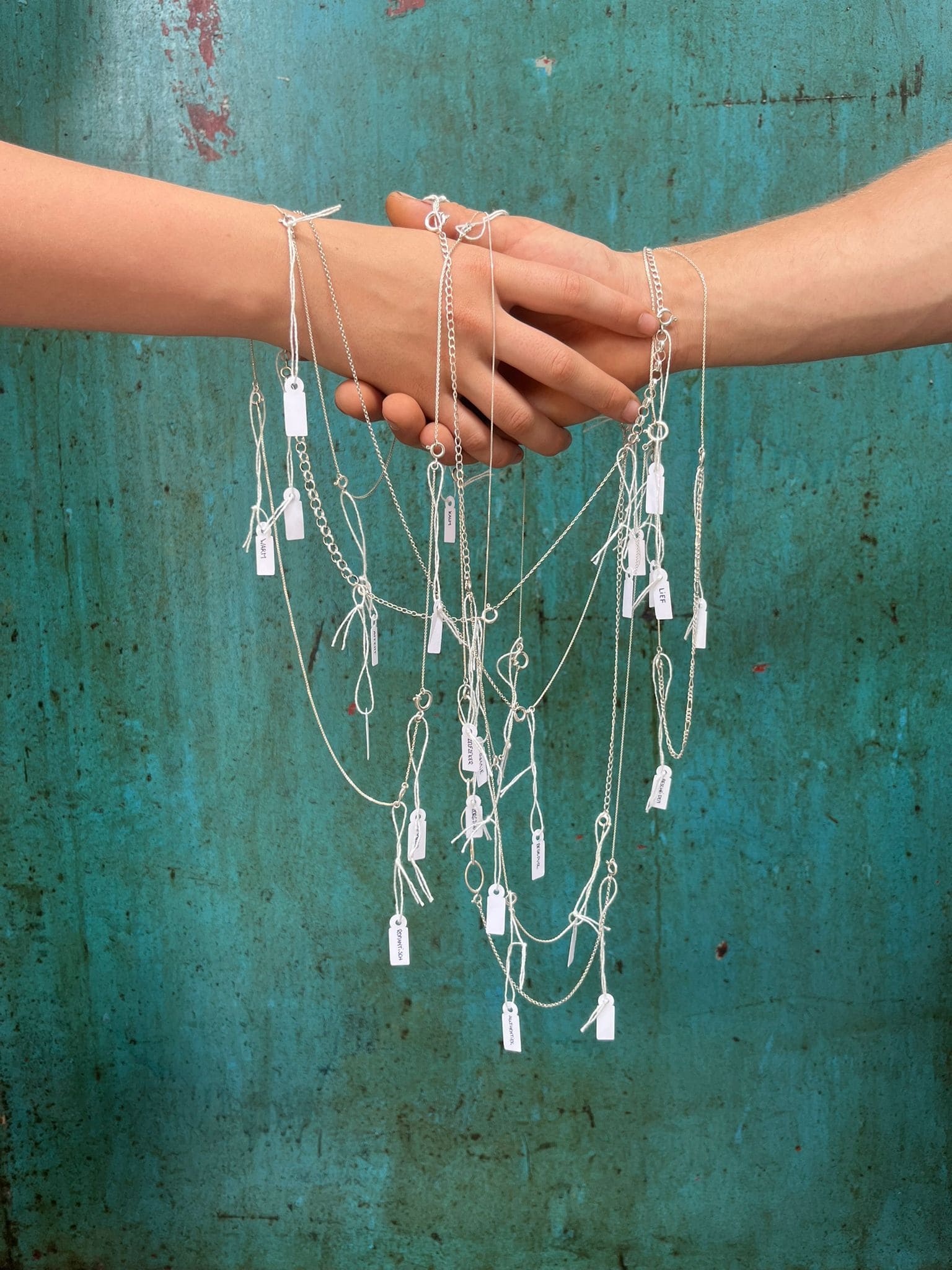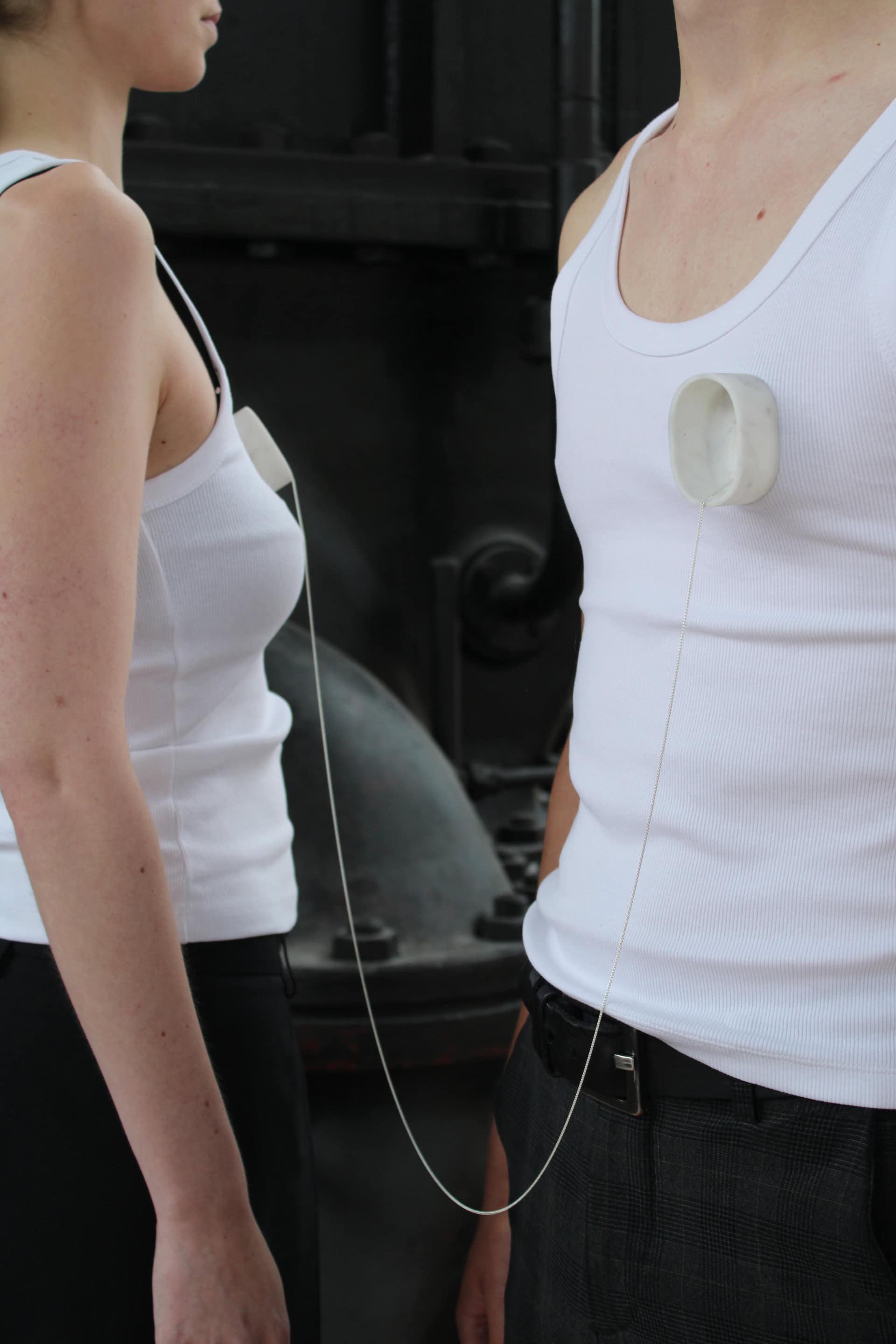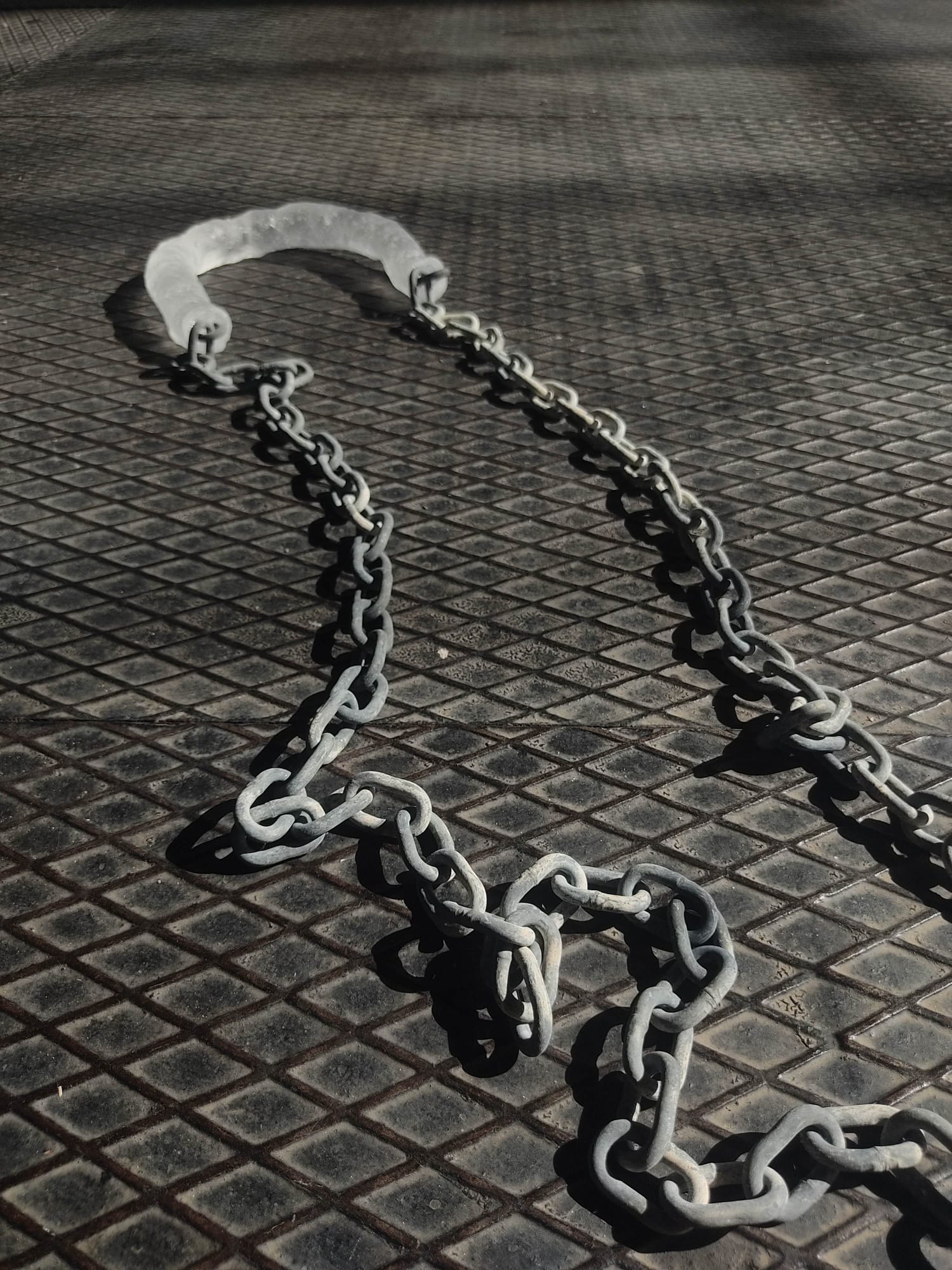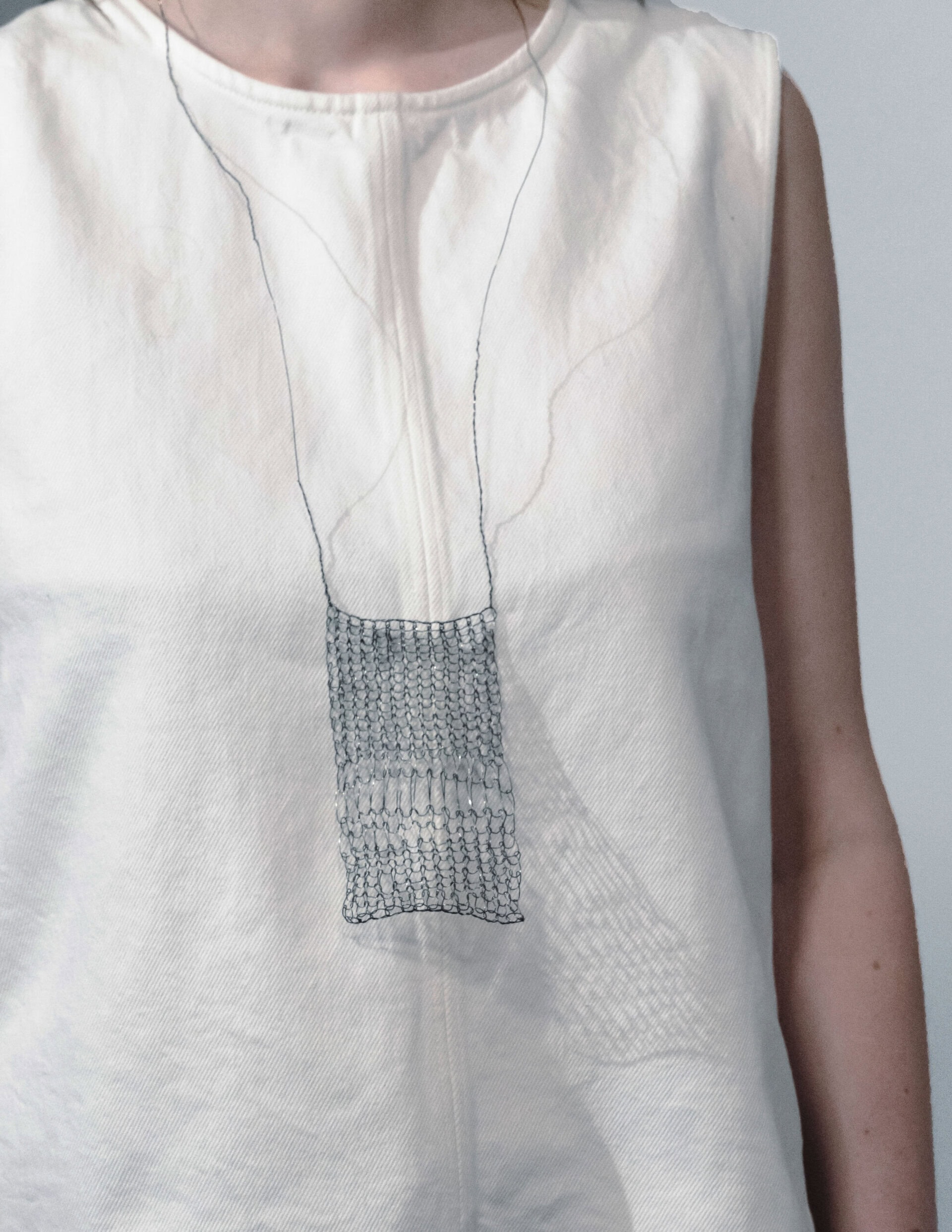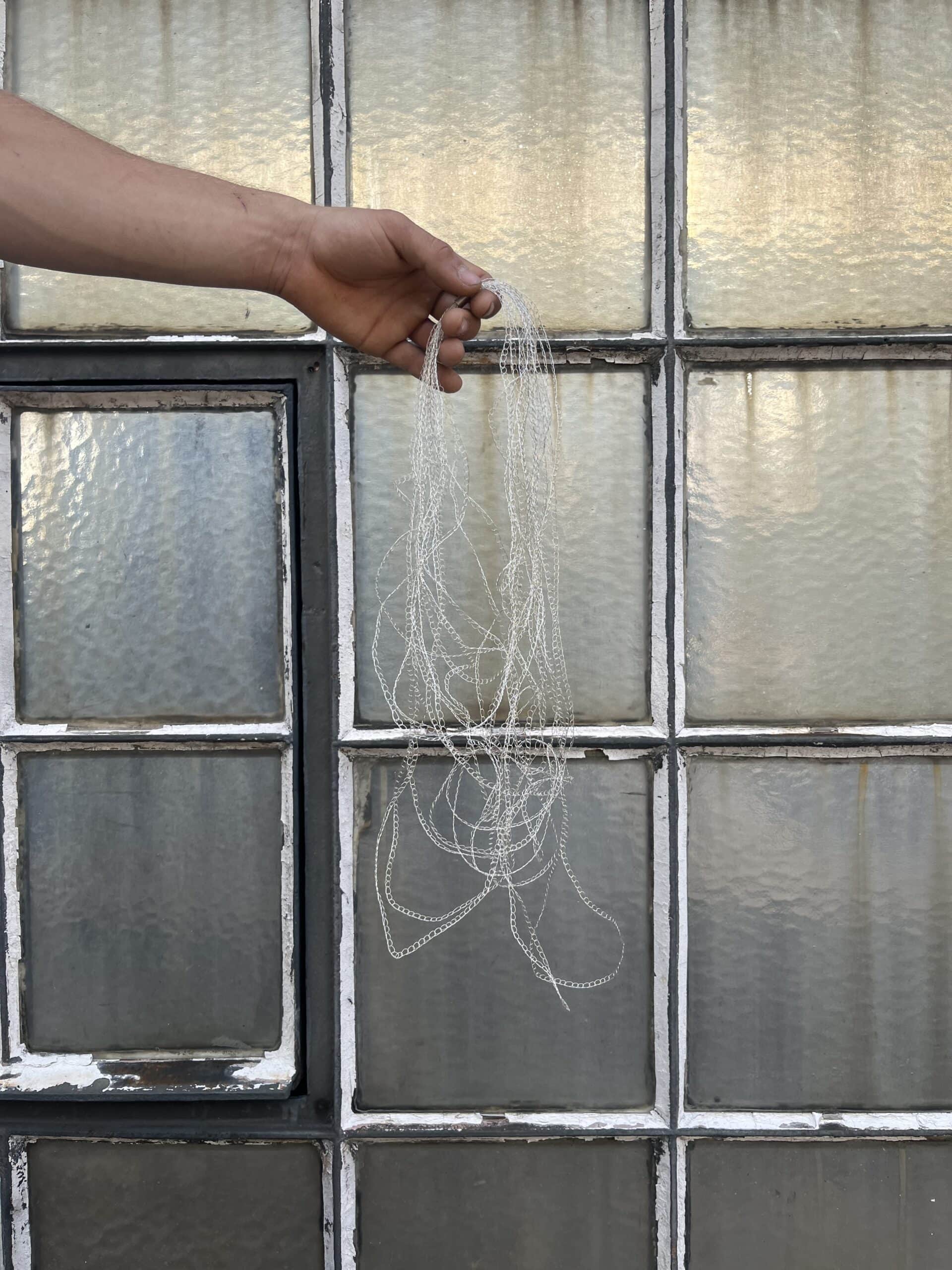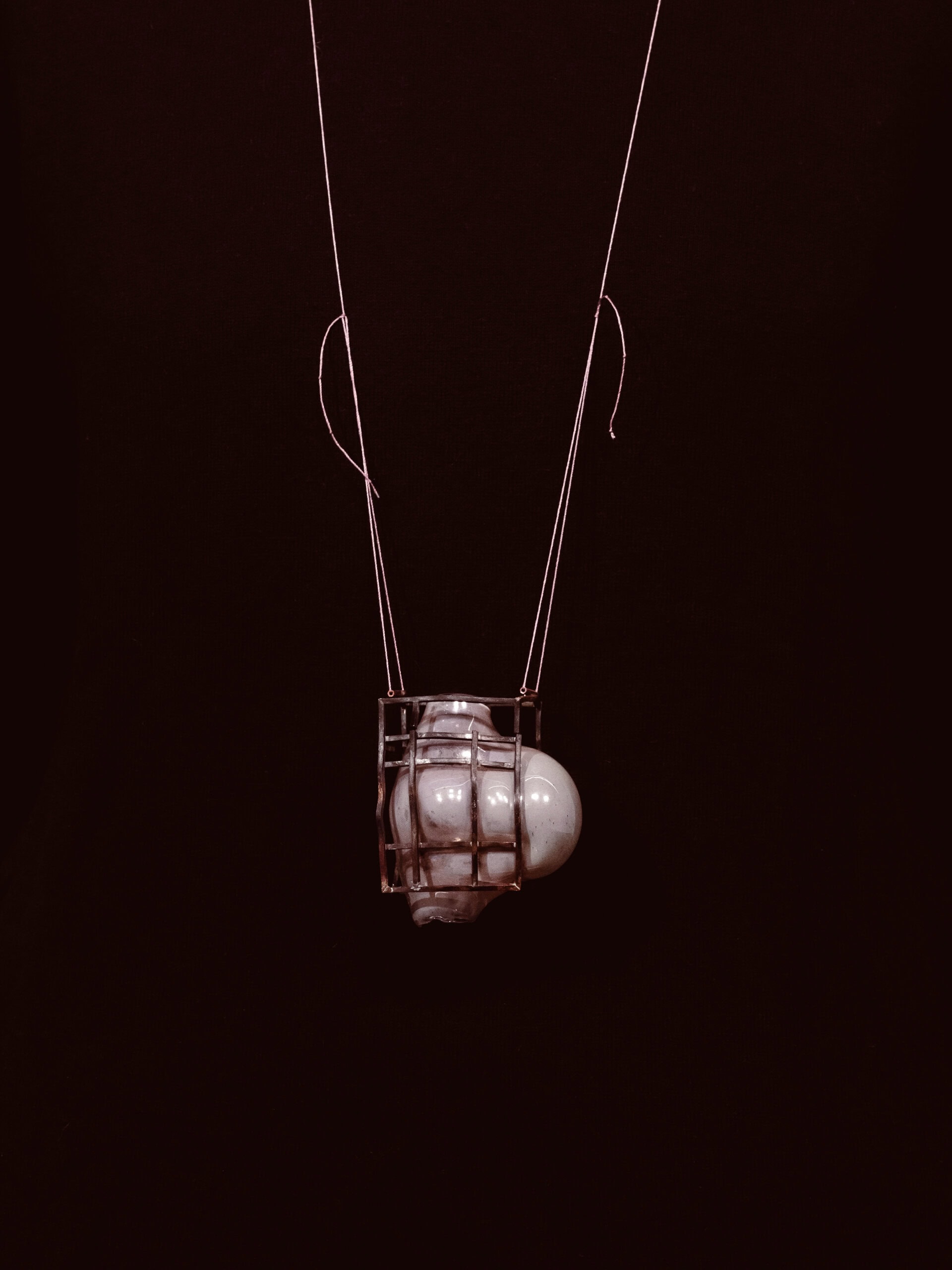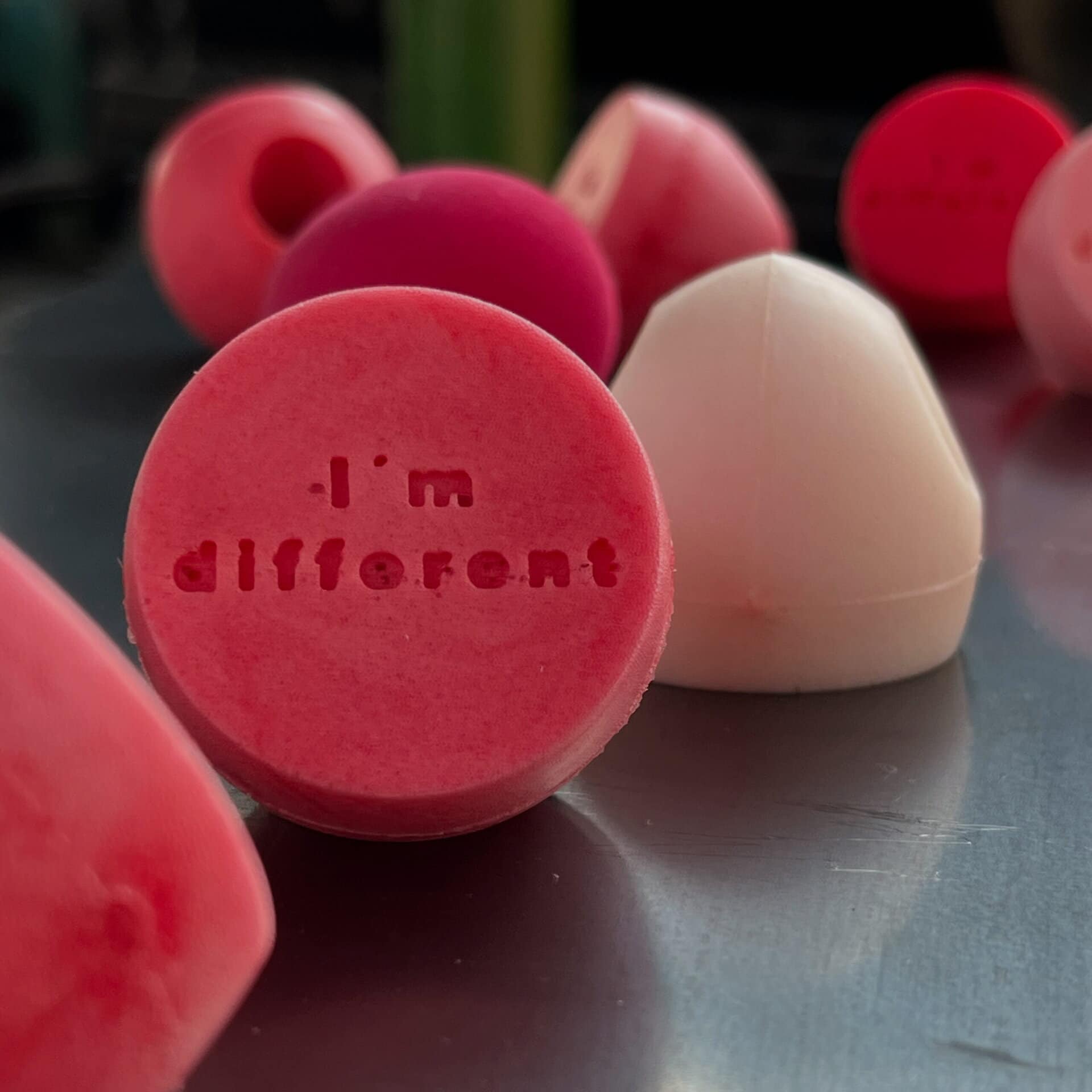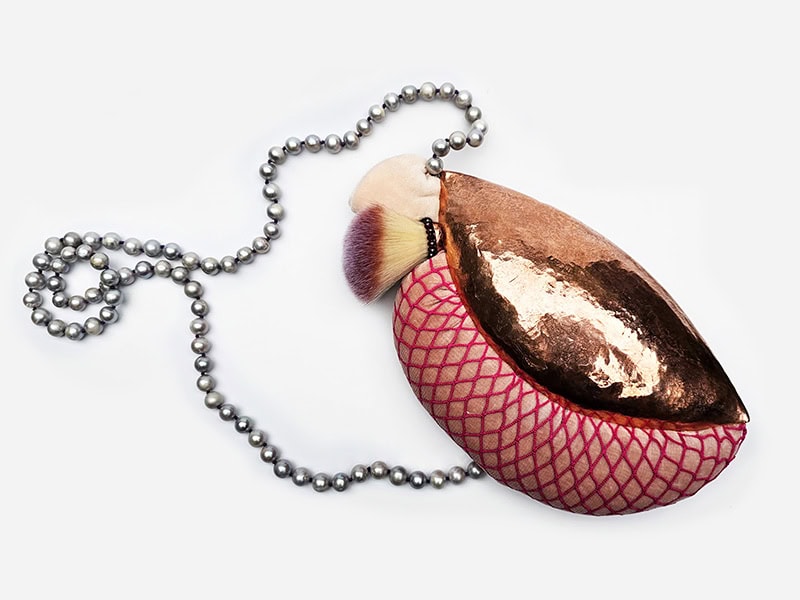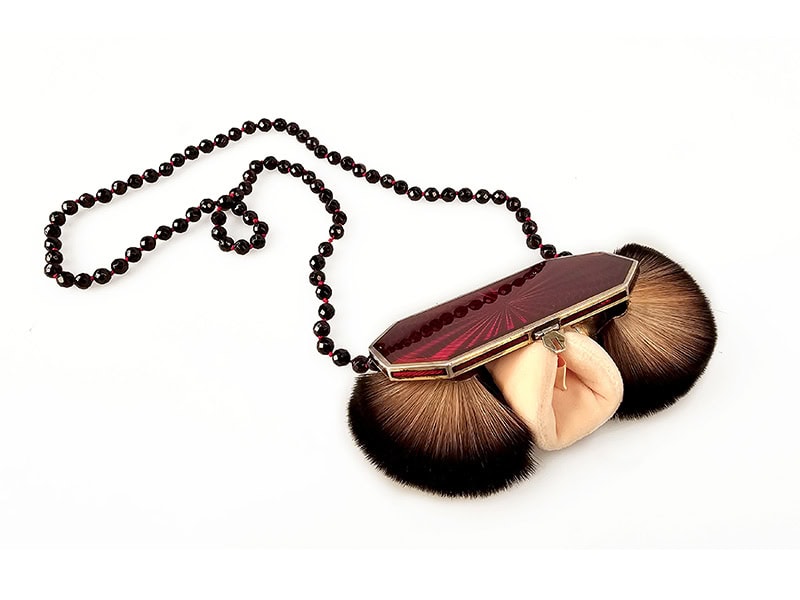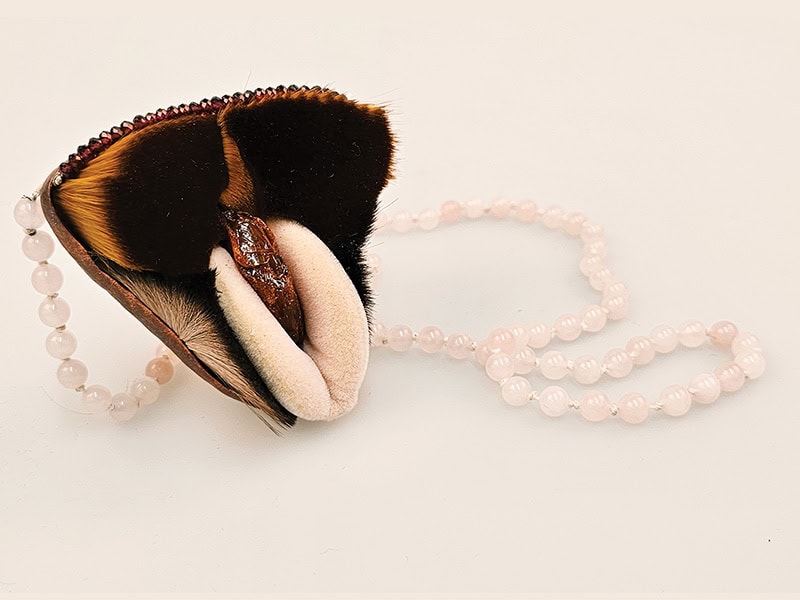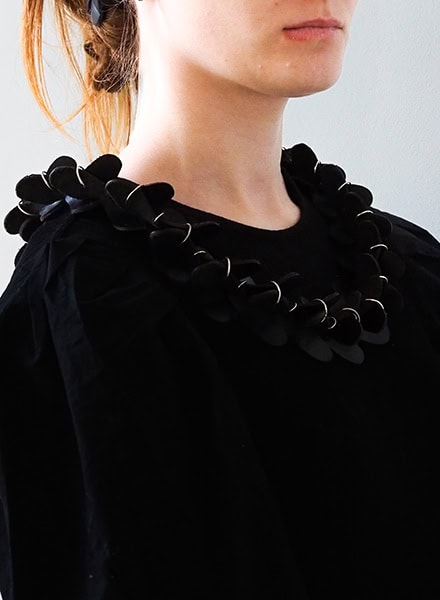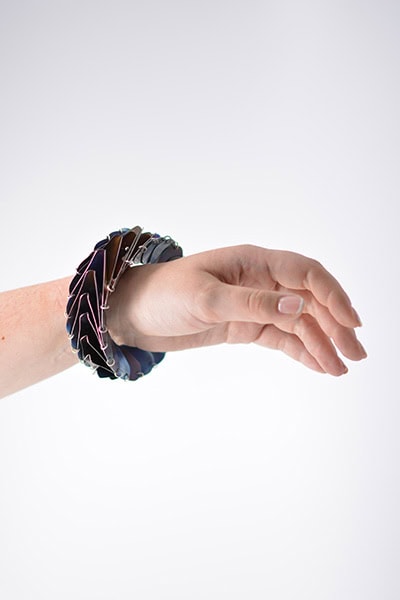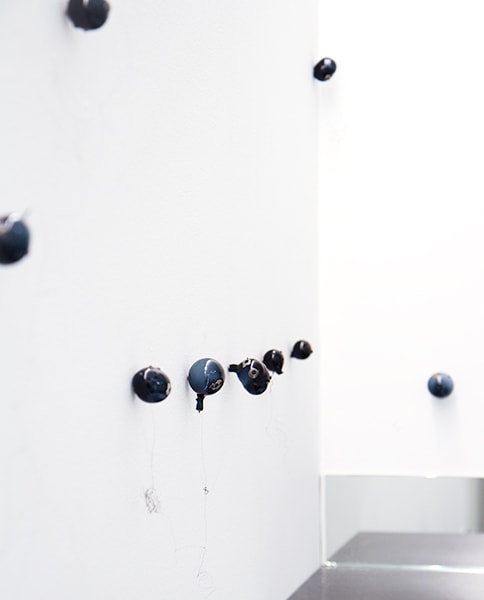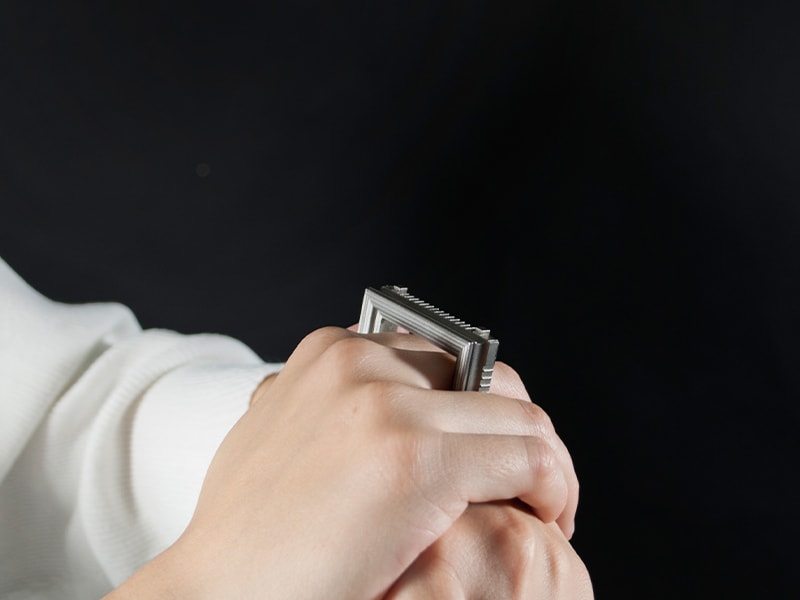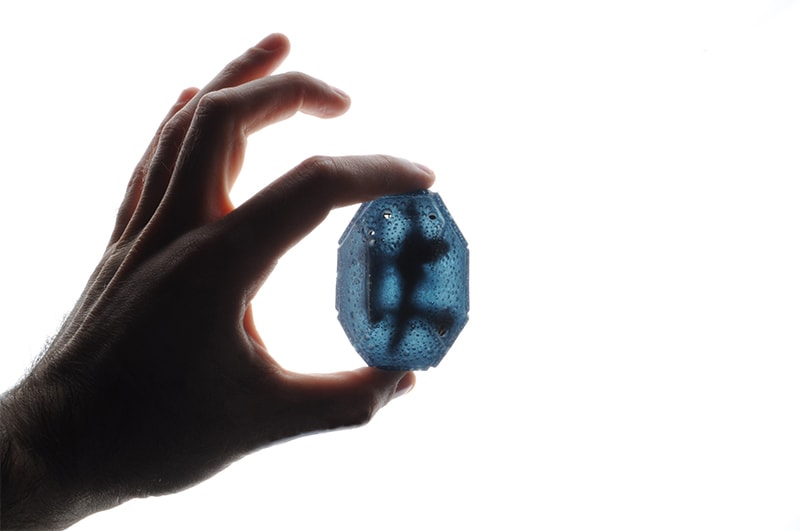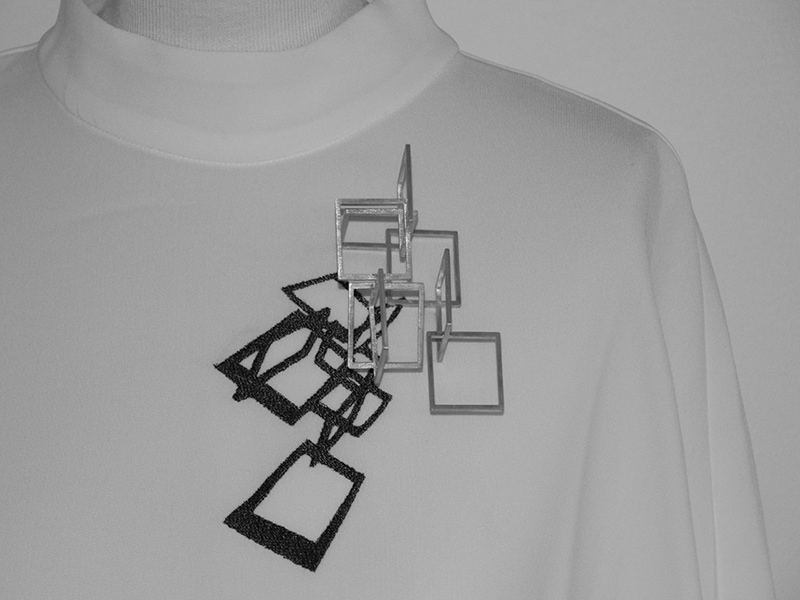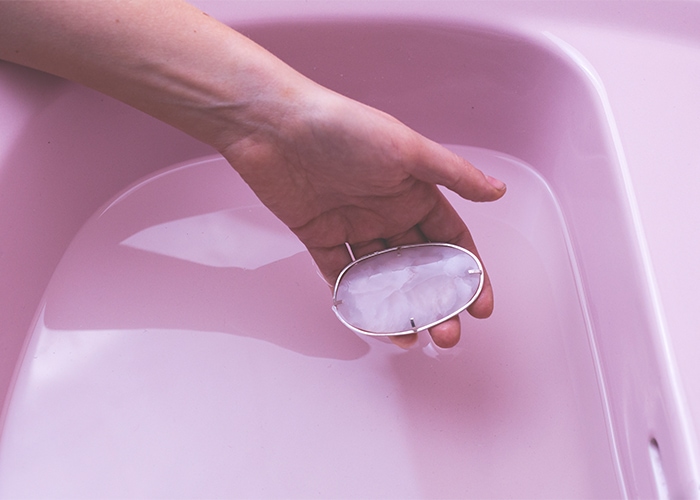PXL-MAD’s Jewellery Design, Gold & Silversmithing department focuses on artistic research where the student’s personal practice prevails. Our MA programme cultivates a learning environment by integrating strong artistic experimentation within a conceptual framework. The goal is to create an inspiring environment where students find their own voice and become confident makers and designers. Our teaching staff are highly qualified and experienced professionals in the fields of jewellery and object design, art theory and history. Some are internationally acclaimed artists/designers who have developed their own practice or worked for legendary companies. PXL-MAD offers exquisite studio facilities and works with renowned guest lecturers and tutors.
Objecthood in Expanded Field
is a programme within the Jewellery Design, Gold & Silversmithing department.
“Back to the things themselves”: this bold statement captures the essence of the MA programme in object and jewellery design at PXL-MAD (Hasselt, Belgium). This academic programme concentrates on objecthood as a fundamental human dimension. Whether it’s a piece of jewellery, metalwork, an object of use, a sculpture, or a fashion accessory, objects allow us to make sense of the world. They adorn our bodies and interiors, making us think about and feel what we leave behind. Objects constitute our most profound memories and cultural heritage. That is why PXL-MAD’s MA programme addresses all the artistic, technical, and material aspects of conceptualising, making, reclaiming, and presenting objecthood in an expanded field.
This one-year academic programme consists of 60 credits and concentrates on all the dimensions of conceiving, designing, and presenting objects. The programme is structured around three main academic clusters: studio work, critical reflection, and presentations.
Artistic Studio Practice
This cluster unfolds in a dynamic environment that balances both thinking and making. Here, students can explore objecthood in various contexts—contemporary and historical—while examining its multiple dimensions, including artistic, material, technical, socio-political, and ecological aspects. The spacious and luminous studios are equipped with individual workbenches for each student, along with state-of-the-art infrastructure, including 3D printers and laser cutters.
Critical reflection
The MA seminar consists of a series of lectures aimed at exploring conceptual landscapes that assist students in accurately and inspiringly articulating their projects. Central themes of this cluster include design history, critical thinking, and semantic proficiency, with lecturers actively collaborating with students on these topics. The critical reflection culminates in a final thesis.
Presentations
A central goal of the MA programme is to provide an accurate representation of how the worlds of craft, design, and art work. Presentation moments provide students with insights into the cross-pollination between reflecting, making, and writing. Therefore, the academic year includes a continuous assessment procedure: during a mid-term presentation, candidates present their work in progress and discuss their concepts and goals. Based on productive feedback and the creative search for new potentials in the students’ work, the final jury is staged as an exhibition.
Exploring Belgium
The MA programme actively integrates travelling into its academic ambitions. Belgium, at the crossroads of cultures, makes Hasselt an ideal location to blend passionate work with insights into local culture and its renowned art scene. Hasselt is a cultural hub with a focus on fashion (the Hasselt Fashion Museum) and crafts (VAKlab).
From Hasselt, you can easily take day trips to the most famous museums in Bruges, Brussels, Ghent, and Antwerp, where you can delight in both old and contemporary masterpieces. Additionally, you can find inspiration in the majestic landscapes of Limburg or along the North Sea.
Faculty & Pedagogy
Our team includes internationally experienced professionals in the domain of object and jewellery design, theory, and curatorship. Their signature pedagogical approach relies on a specific dramaturgy of the studio: each project is approached as a workflow that is nourished with visual narratives, challenging techniques, and exciting scenographies. In this context, the teaching staff facilitates and guides a creative process where the artistic and commercial potential is explored.
MA team: Nedda El-Asmar, David Huycke, Vlad Ionescu, Audi Pauwels, Anneleen Swillen
More info via: https://www.pxl-mad.be/en/jewellery-design-gold-and-silversmithing
MA
Requirements and Application
Master and Pre Master in Visual Arts
15 Sep 2025 – 30 Jun 2026
Deadline: 10 June 2025
APPLICATION DEADLINES
- Non-EEA-students, especially those who are not holding a valid residence permit for Belgium/Schengen countries: 14 February 2025
- Non-EEA-students with a valid residence permit for Belgium; EEA students, Belgian students with an international diploma, students with a diploma from the French Community: 10 JUNE 2025
Requirements
For admission to the MA programme, applicants need to have obtained a bachelor’s degree in jewellery design, product design, interior design, architecture, or fine arts. Since English is the official language of the programme, a solid knowledge of written and spoken English is required. This knowledge can be credited either through the results of another educational programme or based on an internationally recognised B2 English diploma that covers reading, listening, speaking, and writing.
We offer a one-year Pre-Master programme that helps you prepare for and gain entry to the MA programme. An internship is a requirement only for students who have had no previous experience during their BA programme.
More information:
After graduation
Following the completion of your studies, this MA programme offers you the possibility to work as an independent artist/designer or to seek employment in the world of design, fashion and education. Other possibilities include further artistic research on a doctoral level or following an educational path.
BA
15 Sep 2025 – 30 Jun 2026
DEADLINE: 31 August 2025
All theory classes are taught in Dutch, therefore there are Dutch Language requirements for the Bachelor Programme.
‘Object & Jewellery’ at PXL-MAD is an artistic, academic educational programme consisting of three bachelor years (180 ECTS) and one master year (60 ECTS).
For more information about the BA programme, click here.
For questions regarding the BA or MA programme, please contact Josefine Mass (Josefine.Mass@pxl.be).
MASieraad
From September, 2021 till September 2024, the Masterclass Program MASieraad H-A was an integrated program of the Master in Visual Arts specialisation Jewellery Design, Gold and Silversmithing and post-graduate education at PXL-MAD. Successful completion of the Masterclass Program led to a Master’s degree in Visual Arts specialisation, Jewellery Design, Gold and Silversmithing and a certificate MASieraad H-A. Lessons and workshops took place on PXL-MAD’s state-of-the-art premises, where students were offered access to various tools and techniques, including 3D printing, laser cutting, textile, film and printing.
In 2024, after having delivered 2 cohorts of talented international Master students at PXL-MAD in Hasselt, and 1 cohort at the Sandberg Instituut in Amsterdam, MASieraad is taking a new direction based on the commitment of people involved, alumni, teachers, the board of the foundation, and others. The multi-layered history of their teaching and the individuality of the artists and others connected with MASieraad is their base.
More info via https://masieraad.com/
Faculty
Nedda El-Asmar studied jewellery design, gold- and silversmithing at the Royal Academy of Fine Arts, in Antwerp, and she completed her education at the Royal College of Art, in London. It’s impossible to sum up her various activities over the last 25 years in one word. Openness, flexibility, and diversity are key concepts in her thinking and design approach. Her designs have earned numerous awards and prizes. She works for renowned names such as Hermès, Puiforcat, Gense, Villeroy & Boch, Robbe & Berking, Serax, and Maison Vervloet. From 2007–2019 she was head and senior lecturer of the Jewellery Design, Gold & Silversmithing department at the Royal Academy of Fine Arts, in Antwerp.
Prof. Dr. David Huycke graduated in 1989 from Sint-Lucas University College, in Antwerp, and has run his own studio since 1993. His objects are shown in galleries and museums worldwide. In 2007 and 2019 he received the Bavarian State Prize for Contemporary Crafts, and in 2010 he acquired his PhD in arts with the project The Metamorphic Ornament: Re-Thinking Granulation, a practice-based research on the artistic relevance today of the ancient technique of granulation. Huycke sets to work like a poetic scientist or an alchemist, casting in moulds seemingly impossible concepts, incurring along the way risks such as breakage or collapse. Eventually those ideas and experiments are selected and elaborated into an object where they exude a degree of stillness and have a natural obviousness, as if the work could not have been made any other way.
Audi Pauwels studied at the Royal Academy of Arts, Antwerp, where he graduated in 1988. Five years later he founded the Object & Jewellery department at the PXL-MAD School of Arts, where he is still a senior tutor. Audi also runs the goldsmiths shop Huis Pauwels Spaenjers and the gallery Multiple in Hasselt, together with his spouse, Kitty Spaenjers. Their own work generally possesses all the ingredients of classic jewellery: almost exclusively made in gold, nearly always combined with a gemstone, and usually limited to the classic trinity of wearable pieces—the ring, the necklace, and the earring.
Dr. Karen Wuytens defended her PhD, titled Redefining Designing and the Development of a Design Model for Designers of Jewellery and Objects, in 2014, and has a specific research interest in a holistic way of designing. In her artistic practice she works on designs custom-made for a client. The experience of the user is always significant in the story of her products. Whether it’s an accessory or a utensil, the experience of the product by the user is always the starting point. Starting from an actual need, she evolves from idea to solution and production, in which each decision is carefully considered in a holistic way. She explicitly uses the qualities and properties of materials and combines these with both traditional know-how and technological production techniques.
Kitty Spaenjers and Audi Pauwels create sleek designs with a personal, bespoke touch. Designing and producing over 80 percent of the jewellery in-house, Huis Pauwels Spaenjers keeps the ancient craft of the goldsmith alive for people who love a unique piece of jewellery, from adjusting existing pieces to designing custom rings, necklaces, and earrings. Hundreds of unique pieces have been created since Huis Pauwels Spaenjers first opened in 1993. Kitty also runs the jewellery gallery Multiple. This is a platform where she invites and exhibits innovative jewellery designers.
Dr. Anneleen Swillen is a lecturer and researcher at PXL-MAD School of Arts and Hasselt University. Her work revolves around the exploration of jewellery in a phygital culture through research in the arts, education, curation, and writing. Her background in Object & Jewellery Design as well as Curatorial Studies provided the foundations for her PhD in arts, which she defended in 2019. For her doctoral research, she explored jewellery through experimental presentations such as performative installations, active archives, and interdisciplinary publications. In 2020, she founded “Artificial Intelligems” in collaboration with composer and data engineer Greg Scheirlinckx. As a fluid collective, currently working on the intersection of jewellery, graphic design, music, XR-performance, dance, and data science, they aim to explore more-than-human co-creation. Anneleen has curated exhibitions, conferences, and debates (inter)nationally, and is regularly invited as a speaker, writer, moderator, and jury member. Her work has been exhibited worldwide and is featured in various publications.
Prof. Dr. Bert Willems defended his doctorate in psychology and educational sciences at the University of Leuven. As a professor, he is attached to University College PXL (PXL-MAD) and Hasselt University (Faculty of Architecture and Arts), where he is co-responsible for research policy. His thinking always starts from a cognitive view on creation and the interesting interplay between culture and economy when it comes to creation.
Lore Langendries (1988), doctor in the arts since 2015, is an artistic maker active in the field of contemporary jewellery and object design and based in Hasselt. Her work balances between the unique and the serial with a particular focus on tactile and physical artefacts, the behavior of natural materials in combination with digital technology, and her own intuitive role as a maker. Central to her work is the use of geometrical shapes showing the essence and beauty of animal hides in their most elementary forms. The material is used as an active agent in the design and making process, handling the material as subject and matter.
An Jonckers studied object and jewellery design and the Specific Teacher Training Programme at PXL-MAD School of Arts. On the one hand, her interest in jewellery history led to her job at Adin, a renowned jewellery store specialising in antique jewellery, after her studies. On the other hand, An also followed her fascination for gemstones by participating in the gemmology programme at the Academy of Mineralogy (ACAM). Her knowledge and competence in regard to gemstone identification was soon awarded with recognition at the European level (FEEG). Subsequently, she was offered the opportunity to participate in the founding of an innovative gemstone certification company in Antwerp (IJGC). Her entire track record enables An to work as a freelancer in all the professional domains that get her heart buzzing: jewellery design, antique jewellery, gemstones, and inspiring others in an educational environment.
Vlad Ionescu is associate professor in the history and theory of art and architecture at PXL-MAD School of Arts/ Faculty of Architecture and Arts, Hasselt University. Originally specialised in formalist aesthetics and art history (from Aloïs Riegl to Aby Warburg via Heinrich Wölfflin and Wilhelm Worringer), he has published on the theory of art and architecture, art criticism and art history. Besides co-editing and co-translating Jean-François Lyotard’s Writings on Contemporary Art and Artists (Leuven University Press, 2009-2013), he is the author of – amongst other titles – Applied Arts, Implied Art. Craftsmanship and Technology in the Age of Art Industry (A&S Books, 2016), Pneumatology. An Inquiry into the Representation of Wind, Air, Breath (ASP, 2017), and Waiting Rooms of Architecture, with Malgorzata Maria Olchowaka (VAi, 2023). Vlad Ionescu teaches on art theoretical issues that are relevant to the BA and MA programmes.
Sophia van der Walt, guest lecturer at PXL-MAD and goldsmith, studied creative jewellery design and metalwork at Stellenbosch University (Bachelor of Arts in Visual Arts, 2017) and subsequently completed her MA in jewellery design, gold- and silversmithing at PXL-MAD (2020). Prior to her studies in jewellery design she graduated with a BA in humanities, majoring in Philosophy and English Studies (2013), after which she completed her BAHons in Philosophy, graduating with distinction. Currently Sophia teaches 3D design at PXL-MAD and runs her own goldsmith studio in Cape Town, named Sophia le Roux Jewellery. She makes bespoke jewellery, using mainly traditional materials such as gold, silver and gemstones, but also creates more contemporary pieces that are rooted in her MA research, where she worked with the interplay of narrative construction and identity. Her work integrates her education as contemporary jewellery designer with traditional jewellery making techniques, creating unique, wearable pieces that each have a story to tell.
Charlotte Vanhoubroeck, PhD researcher, (1991, Ghent) graduated with an MA in art history from Ghent University (2013). She subsequently obtained a BFA from Luca, School of Arts, Ghent (2016), while at the same time studying jewellery, gold-, and silversmithing at d’Academie Beeld, Sint-Niklaas. After graduating from d’Academie (2018) she became self-employed and left Belgium for the post-graduate program for silversmithing and jewellery at Bishopsland Educational Trust, in Reading, UK (2019). This was made possible with the support of the King Baudouin Foundation. Once she had returned to Belgium, she finished her master’s degree in object & jewellery at PXL-MAD School of Arts (2020). There, she is currently conducting a PhD in the arts with the support of FWO, investigating and reactivating the lost sentimental jewellery of the first Belgian queen, Louise-Marie d’Orléans, from a contemporary point of view. In this way she will bring this somehow forgotten queen closer to today’s audience.
Liesbet Bussche, PhD researcher, (1980, Antwerp) studied jewellery design at the Gerrit Rietveld Academie (BDes, 2009) and St Lucas School of Arts Antwerp (MA, 2016). In her artistic practice, she explores jewellery as a sociocultural phenomenon, using the substantive and formal characteristics of archetypal jewels as starting points. Her body of work is rooted in jewellery but transcends its disciplinary boundaries. Her modus operandi is characterized by a research-based and conceptual approach, and results in self-initiated and commissioned installations, objects, and printed matter in which the public space acts both as a source of inspiration and an area of intervention. In addition to running her own art practice in Amsterdam, she has taught at the Gerrit Rietveld Academie (2016–2020) and has worked as a researcher at St Lucas Antwerp (2011–2020). She is currently pursuing her PhD in the arts at Hasselt University and PXL-MAD School of Arts, researching the interrelation between jewellery and the city.
Maria Konschake, PhD researcher, (1990, Germany) is a visual artist, researcher, and jewellery maker whose artworks are craft-based explorations that reflect on historical, political, and socio-critical themes. She was trained at the Staatliche Zeichenakademie, studied at the Hochschule Wismar and PXL-MAD School of Arts Hasselt. Currently she is pursuing a PhD in the Arts at Hasselt University, PXL-MAD School of Arts Hasselt, researching memory-related deviation as a process to create art objects based on identity-related jewellery.
Johanna Van Hage (studio manager)
Frederik Aerts (studio manager)
Josefine Mass (coordinator of MASieraad + coordinator of PXL-International)
RECENT GRADUATES: If you recently received a degree–BA, BFA, MA, or MFA–from this university, everything you need to know to upload your graduate portfolio can be found at this link.


